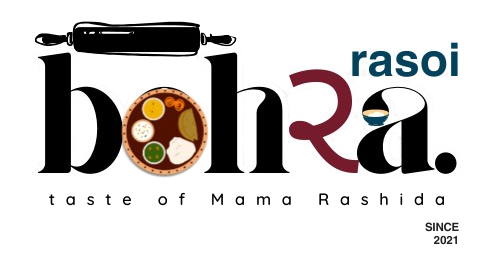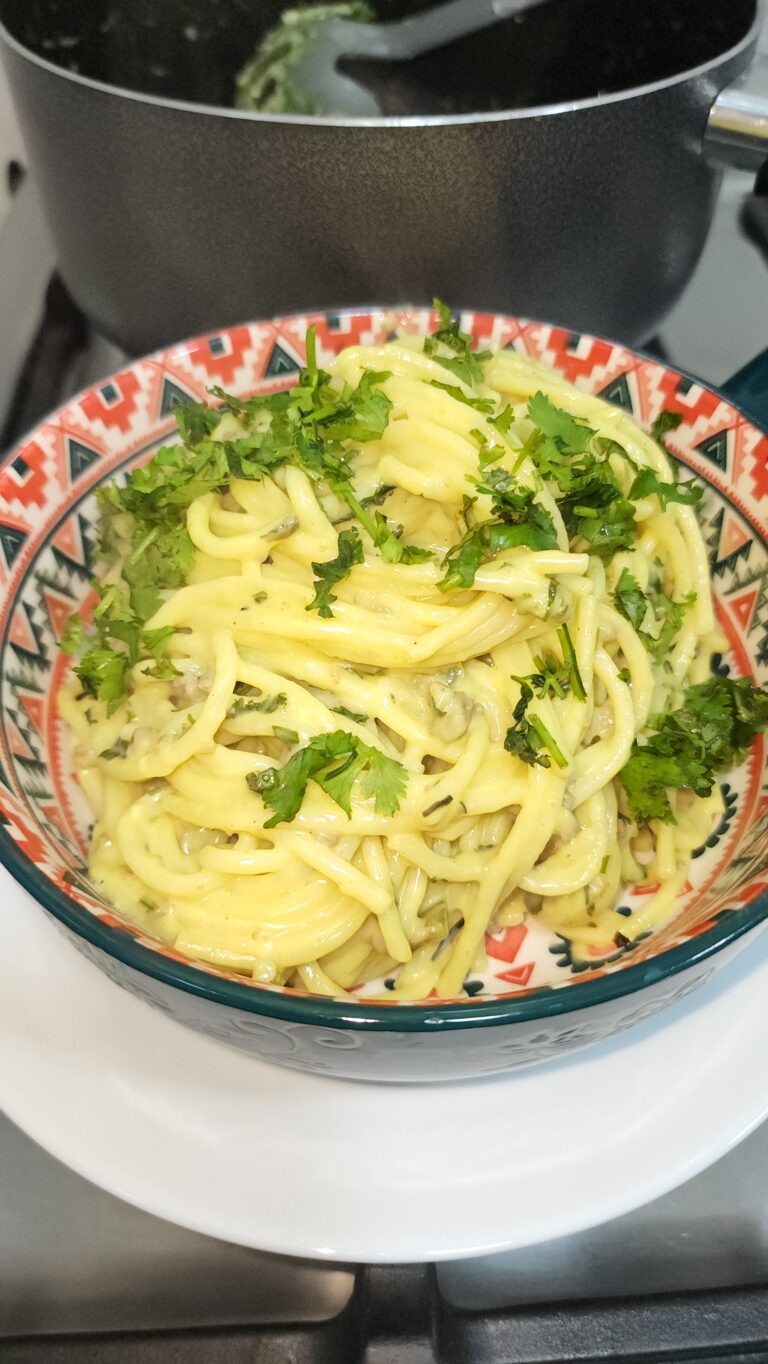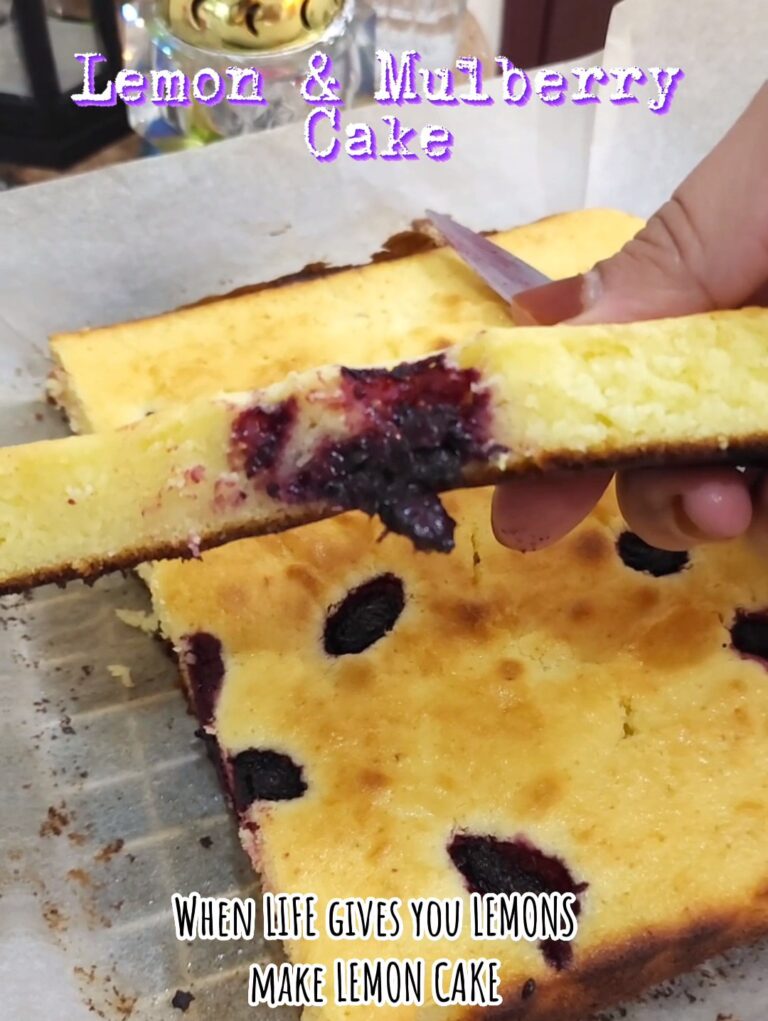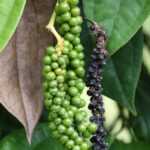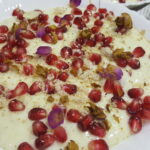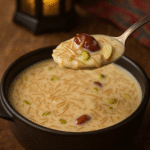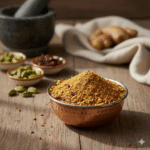The Best Fluffy Pancakes recipe you will fall in love with. Full of tips and tricks to help you make the best pancakes.

Bohra Egg Mesub is a treasured dessert of Bohra cuisine, celebrated for its creamy texture, golden granules, and delicate aroma of saffron and cardamom. Known by many names – Anday Ki Barfi, Anda Paak, Beda Paak, Anday Ki Mithai, and Anday Ka Halwa – this dessert has been passed down through generations, often served at festivals, weddings, and family gatherings.
Unlike modern recipes measured in grams, Bohra Egg Mesub is made using the traditional bowl method, where all ingredients are measured using the same size and shape of bowls or cups. This ensures perfect proportions and an authentic taste.
Whether you’re a beginner or a seasoned chef, this step-by-step guide will help you create creamy, aromatic, and slightly crispy Mesub every time.
Summary
Bohra Egg Mesub, or Anday Ki Barfi, is a labour of love. Eggs, sugar, and ghee are emulsified together, then cooked slowly over a low flame while stirring continuously. Over 40-45 minutes, the mixture transforms from a smooth custard into golden, slightly crispy granules – the hallmark of authentic Mesub.
Other alternative names like Anda Paak, Beda Paak, and Anday Ka Halwa reflect the dessert’s versatility: some prefer it soft and halwa-like, while others enjoy the firmer, barfi-style texture.
Historical and Cultural Note: Beda Nu Mesub
Beda Nu Mesub is a timeless Bohra dessert that has been cherished in Dawoodi Bohra households for generations. Its origins lie in the Gujarat region of India, where the Bohra community developed a rich culinary tradition blending Indian, Middle Eastern, and Persian influences.
Traditionally, Beda Nu Mesub was prepared for special occasions, religious festivals, weddings, and family celebrations, symbolising patience, care, and culinary artistry. The name itself – “Beda” meaning egg, and “Mesub” referring to the slow-cooked granulated preparation – reflects the community’s practice of using simple ingredients to create complex flavours.
This dessert is not just a treat for the taste buds; it represents heritage, family traditions, and the joy of communal cooking, often passed down from mothers to daughters. The meticulous process of stirring the eggs, sugar, and ghee for over 40 minutes makes it a dish that honours patience and precision, qualities deeply valued in Bohra culinary culture.
Over time, Beda Nu Mesub has also become known by other names – Anday Ki Barfi, Anday Ka Halwa, Anda Paak, Beda Paak, and Anday Ki Mithai – each reflecting its versatility and regional popularity while maintaining its identity as a classic Bohra sweet.
Including Beda Nu Mesub in meals today is a way for families to preserve tradition, celebrate heritage, and share the sweet stories of their ancestors with the next generation.
- Beda” (or sometimes spelled Beda/Anda) literally means egg in Gujarati/Bohra parlance. In Bohra households, eggs are called beda, and many traditional egg-based sweets use this term.
- “Nu” is a possessive connector in Gujarati/Bohra language, meaning “of”.
- “Mesub” refers to the process of slow cooking and stirring eggs with sugar and ghee until they form granules – essentially the dessert itself.
So, “Beda Nu Mesub” literally translates to “Egg’s Mesub” or “Mesub made from eggs”. It’s a traditional name that highlights both the main ingredient (egg) and the unique cooking method (mesub), which distinguishes it from other sweets like regular barfi or halwa.
This is why it is also commonly called Anday Ki Barfi, Anday Ka Halwa, Anda Paak, or Beda Paak – all names referring to egg-based traditional sweets in Bohra households.
Method: Step-by-Step Guide
1. Emulsifying the Base (5 mins)
Combine ghee, sugar, and eggs in a bowl. Mix vigorously until smooth and creamy.
- Proper emulsification is the foundation for perfect Mesub (Anday Ki Barfi / Anda Paak).
- Tip: Use a whisk for easier blending.
2. Start Cooking on Low Flame (0-10 mins)
Transfer the mixture to a heavy-bottomed pan. Place it on very low heat.
- Stir continuously in a single direction to ensure even cooking.
- Initially, the mixture will be soft and runny – at this stage, it’s similar to Anday Ki Mithai.
3. Creamy Thickening Stage (10-20 mins)
The mixture begins to thicken into a custard-like consistency.
- Aroma: Subtle caramelisation of sugar begins.
- Texture: Smooth and creamy.
- Tip: Scrape the pan edges gently to prevent sticking.
4. Grain Formation Stage (20-30 mins)
Tiny golden granules start forming as the eggs cook completely.
- Ghee separates along the edges.
- Texture: Thick and slightly sticky.
- At this point, the dessert can be called Anda Paak, as the egg granules start to resemble tiny pearls of sweetness.
5. Golden Granules & Aromatics (30-40 mins)
Add elaichi powder, saffron strands, and optional yellow food colour.
- Texture: Small golden granules are fully formed, hallmark of Mesub.
- Ghee: Glossy and separated.
- Tip: Adjust the flame minimally – rushing will affect the texture.
- Known as Beda Paak at this stage in traditional Bohra households.
6. Final Texture Stage (40-45 mins)
The Mesub is now perfectly cooked:
- Crispy golden granules
- Ghee clearly separated
- Aroma rich and sweet
- Texture: Firm yet soft
- This can also be served as Anday Ka Halwa if a slightly softer, melt-in-mouth style is preferred.
7. Setting & Garnishing (5 mins)
Pour the cooked Mesub into a greased tray, spreading it evenly. Tilt slightly to drain excess ghee.
- Garnish with almond and pistachio slivers.
- Let it cool at room temperature to set fully.
8. Serving
Cut into squares or diamonds. Serve warm for creamy texture or chilled for firmer bite.
- Each bite is a celebration of Bohra culinary heritage.
- Whether called Anday Ki Barfi, Anda Paak, Beda Paak, Anday Ki Mithai, or Anday Ka Halwa, the flavours are universally loved.
Egg Mesub Recipe
Course: Dessert, Bohra Dessert, Snacks, Tea TimeCuisine: Bohra Cuisine, IndianDifficulty: Medium4
servings20
minutes45
minutes300
kcal1
hour5
minutesDelicious Bohra Egg Mesub (Anday Ki Mithai) – a rich, traditional Bohra sweet made with eggs, sugar, and aromatic spices, perfect for festive occasions.
Ingredients
* 1 bowl ghee
* 1 bowl sugar
* 1 bowl eggs
* 1 tsp elaichi (cardamom) powder
* 2 pinch saffron strands
* A pinch of yellow food color (optional)
Directions
- Uniform Measurements:
- Begin by measuring all the ingredients using the same-sized bowl or cup, ensuring perfect proportions.
- Whipping the Base:
- Whisk the sugar and eggs together until they’re beautifully blended, creating a harmonious base for our Egg Mesub.
- Infusing the Ghee:
- In a pan, melt the ghee and gently combine it with the egg-sugar mixture. Blend for about 30 seconds, ensuring not to overmix.
- Gentle Cooking Process:
- Over a low flame, start cooking the mixture while continuously stirring. This patient process takes around 20-40 minutes.
- Custardy Transformation:
- As you stir, you’ll notice the mixture evolving. First, it turns custardy, followed by the ghee separating from the sides, and then the eggs forming small grains.
- Colorful Culmination:
- Gradually, the color of the mixture will change, indicating that you’re nearing perfection. Wait until the raw egg aroma fades, the grains become slightly crispy, and a subtle color transformation occurs.
- Sweet Finale:
- Your Egg Mesub is ready! Pour it onto a greased tray, garnish with almond and pistachio slivers, and let it set.
- Tweaking for Perfection:
- Tilt the tray slightly to drain any excess ghee to one side, enhancing the final texture.
- Savor the Moments:
- Once set, cut your Egg Mesub into squares and indulge in its rich flavors. Every bite is a tribute to tradition and cherished memories.
Recipe Video
Notes:
- Use the same bowl for measurements to maintain authentic taste.
- Stir continuously on low flame to avoid burning.
- Ghee separation indicates perfectly cooked Mesub.
- Optional: Add rose water or dried fruits for extra flavour.
Tips & Tricks for Perfect Bohra Egg Mesub
- Heavy-Bottomed Pan: Prevents uneven cooking.
- Low Flame Cooking: Essential for creamy and slightly crispy texture.
- Single-Direction Stirring: Ensures even grain formation.
- Resting Time: 2-3 hours enhances flavour.
- Aromatic Boost: Infuse ghee lightly with cinnamon or cloves before mixing.
- Serving Suggestions: Serve warm for creamy texture, or chilled for firm squares.
Conclusion
Beda Nu Mesub, also known as Anday Ki Barfi, Anday Ki Mithai, Anda Paak, Beda Paak, or Anday Ka Halwa, is more than just a dessert – it’s a celebration of Bohra culinary heritage. With its creamy texture, golden granules, and rich aroma of saffron and cardamom, this timeless sweet brings families together and keeps generations of tradition alive.
We hope this detailed, step-by-step guide helps you master the art of making Mesub, whether you’re a beginner or a seasoned home chef. The joy of preparing Beda Nu Mesub is in the patience, love, and care poured into every stirring motion – a true labour of love that rewards you with every bite.
Explore More Bohra Mithai Recipes
If you loved making Beda Nu Mesub, you’ll also enjoy trying these related traditional sweets:
- Kaju Paak – Rich Cashew Dessert
- Badam Paak – Almond Semolina-Based Bohra Sweet
- Gajar Halwa – Carrot Halwa for Festive Occasions
Learn More About Bohra Cuisine
For readers unfamiliar with terms like Beda or Mesub, check out our Bohra Culinary Glossary for explanations and tips.
You can also dive deeper into the history and tradition of Bohra desserts with these informative articles:
- The History of Bohra Sweets
- Traditional Dessert-Making Techniques in Bohra Cuisine
Share Your Creations!
We’d love to see your Beda Nu Mesub creations! Share your photos and experiences with us on Instagram @bohrarasoi and @eastafrican.foodie using the hashtag #BohraEggMesub. Your feedback and photos help keep Bohra culinary traditions alive and inspire others to try these timeless recipes.
Whether for festivals, family gatherings, or just a sweet treat, Beda Nu Mesub connects you to centuries of Bohra heritage – a true masterpiece of taste, culture, and tradition.
